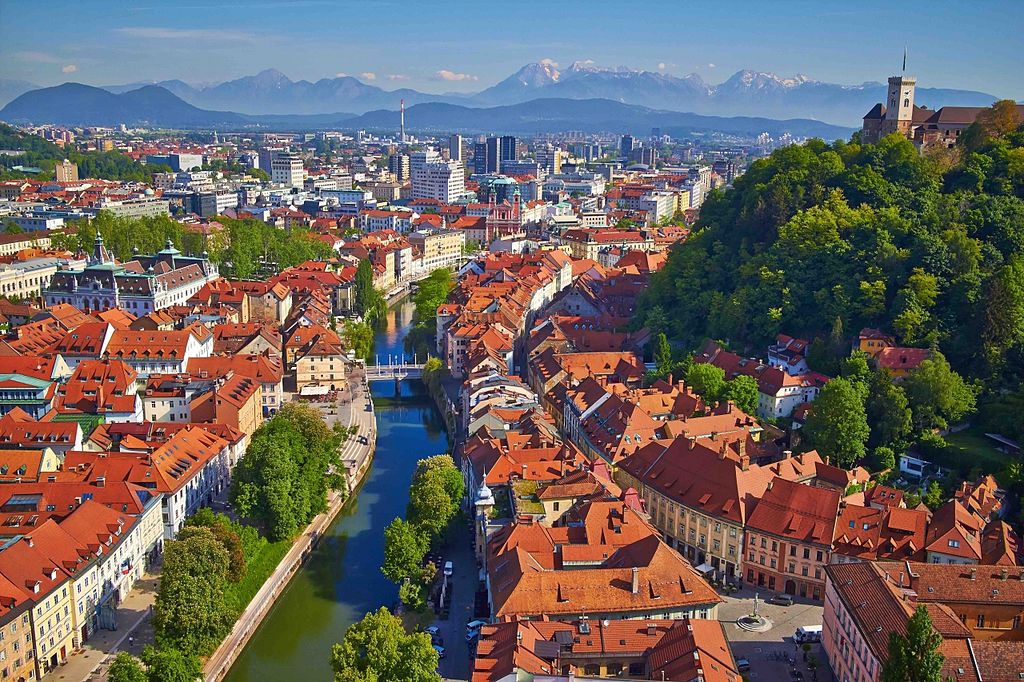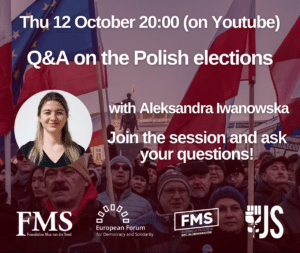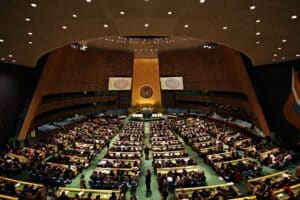Contribution by Sonja Lokar
Who will decide the outcome of the April 2022 elections in Slovenia? That’s a stupid question. The obvious answer is the same as always: those voters who will turn out to vote.
The differences between the, conditionally speaking, conservative and progressive part of the Slovenian electorate have been stable since the first multi-party elections in Slovenia in 1990: 40% vs. 60% . Between 5 and 10% of active voters move between the two poles, the rest rotate in their own pole and slide between parties of a similar world-view pole. But the outcome of elections is primarily determined by turnout, and it is well known that conservative-leaning people are more disciplined voters. Therefore, very often the election is decided by a relatively small percentage of the part of the electorate that moves between the two poles.
The role of women in voting processes
If people were asked who turns out in greater numbers, men or women, most people would certainly say men. If you asked politicians of both sexes and of all political colours, even those who have been elected, most of them would not know. They would guess. This means that neither the public nor the most vibrant players in politics are even aware that the electorate has genders, and that the gender of those who turn out to vote is something that can have a fatal impact on the outcome of elections. In fact, in socially tense circumstances, women can unexpectedly become highly activated and vote differently from men.
Historiography has never really evaluated the role of women in socially transformative situations. It is therefore not widely known that, whenever it really mattered, women became politically active and entered the public sphere even when they did not even have the right to vote. Women organised the hunger march on Versailles in the French bourgeois revolution that cost the king his head. Women, striking textile workers, demanding bread, actually finally triggered the Soviet Revolution of 1917. It is almost unknown that in 1917 women in Slovenian parts of Austro-Hungarian empaire collected the majority of signatures for the May Day Declaration, which later led Slovenes to the first Yugoslavia. It is little known that in the spring of 1943, Slovenian women in occupied Ljubljana organised the only mass demonstration against the fascists in Europe, who shot hostages in our country during the Second World War.
In modern times, in tense political circumstances, it happens that women voters decide the outcome of elections. This is not only the case in the Nordic countries, where Finland’s first female President, Tarja Halonen, was elected twice, in fact due to women and young people, who unexpectedly gave her an extra two percentage points of the vote. In Austria, feminists also prevented the election of a conservative female head of state and, by a narrow margin, brought the Socialist Hainz Fischer to the post. We even have similar examples in our own neighbourhood, in countries with a much shorter history of multi-party democracy: in Hungary, before the country’s accession to the EU, the socialists defeated the then conservatives with just two percent more votes, coming from women voters; in Serbia, in 2000, a similarly narrow margin of votes from women and young voters threw Milosević out of power.
The important role for Slovenian women
In Slovenia, gender-disaggregated data on people who vote are available on the website of the National Electoral Commission for the last three elections – the 2017 presidential, 2018 early national and 2019 European elections, and for the 2021 referendum on clear water – these sub-figures show something surprising: in all of these elections, the share of women voters was higher than the share of men voters. In the referendum in clean water, it was even noticeably higher, by 5 percentage points. The latter vote was strongly boosted by the votes of young women voters.
Close observation shows that the part of the electorate that lost the most and suffered the most after the financial crisis due to forced austerity (the so-called Janša’ austerity law) and now, after the disastrously managed confrontation with the pandemic, has woken up politically. Apart from young people, it is women – those in employment who have had to work from home and at the same time take care of their children’s schooling and care for the helpless elderly, those in critically needed professions in health, education, retail, social services, precarious workers who have suddenly found themselves out of a job, single mothers, victims of violence behind the walls of their homes. Whose are the faces of the people who have fought most successfully against the rule of decrees and the degradation of democratic institutions? Women’s faces predominate!
For the first time in the history of the modern women’s movement in Slovenia, it also happened that almost all progressive women’s groups in civil society came together and sent a coordinated list of electoral demands to the parties. These include five areas: 1. combating stereotypes, 2. preventing economic discrimination and fighting for decent work, 3. preventing sexual violence, 4. making reproductive health more accessible, and 5. making gender- parity and inclusive democracy a reality.
It is up to the electoral strategies of parties on the left and in the democratic centre to take these demands seriously and to incorporate them prominently in their electoral promises, thus encouraging women to cast their votes and thus deciding the outcome of the National Assembly elections in April 2022.
Photo: A view over Ljubljana, Slovenia’s capital (WikiMedia Commons)



